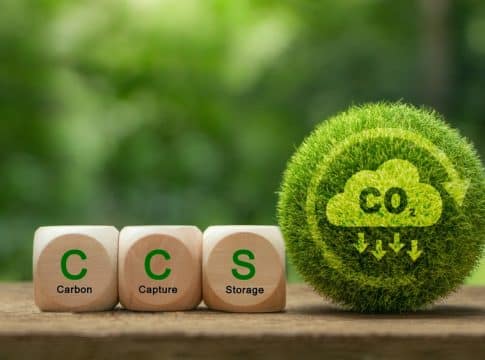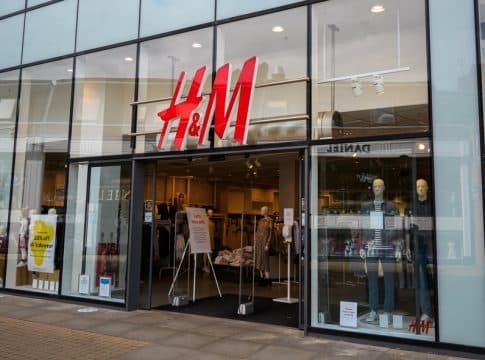What’s New in Verra’s Latest CCS Methodology Update? Find Out!
Verra, a leading non-profit VCM registry in the US has recently released its Verified Carbon Standard (VCS) modular methodology VM0049 for carbon capture and storage (CCS). Carbon dioxide removals play a crucial role in corporate net-zero strategies. Thus, VM0049 is a global framework for tech-based CCS activities that generate carbon dioxide removals (CDRs) and emission reductions.
Unlocking the Future of Carbon Capture: VM0049’s Modular Approach
CCS involves CO2 capture directly from the atmosphere or from high-emission industrial sources. It is then transported or permanently stored underground. CCS is a highly efficient technique to combat CO2 emissions in tough sectors like industrial manufacturing (e.g., cement), oil and natural gas, and power generation.
VM0049 underscores the key requirements essential for CCS projects. Verra’s press release describes that these projects can choose from various modules for CO2 capture, transport, and storage activities to quantify their CDRs and emission reductions. Furthermore, the modules are customizable to fit a project’s design and technological needs. The unique modular format adapts to project expansions, shared infrastructure development, and future innovations.
Verra is set to launch the initial modules in the upcoming months, encompassing the following activities:
Direct air capture
CO2 transportation
CO2 storage in saline aquifers and depleted oil and gas reservoirs
At present, multiple additional modules are under development to encompass a wide range of activities supported by VM0049.
Image: An overview of Verra’s CCS and Transport Model
Pre-requisites for Carbon Capture from Ambient Air
This module governs projects that capture CO2 from ambient air using the latest VM00XX Methodology for Carbon Capture and Storage. Verra’s draft highlights that these projects must meet the following conditions:
Capture activities must extract atmospheric CO2, potentially alongside CO2 from on-site point sources such as oxy-fuel combustion. Methods may include chemical or physical absorption/adsorption with solvents or sorbents (e.g., amines), membrane processes, electrochemical processes, or cryogenic processes.
The primary capture fluid or media must be regenerated to prevent one-time use. It should yield a concentrated CO2 stream available for subsequent transport and storage.
Capture facilities must either be new, expand existing ones, or refurbish those that would otherwise be decommissioned at the project’s start.
Both existing and new capture facilities can share auxiliary equipment like utilities.
Notably, this framework ensures that CO2 capture from ambient air meets rigorous standards, facilitating effective carbon storage and utilization. The draft is yet to be finalized.
MUST READ: Revolutionizing Forest Protection: Verra Introduces New REDD+ Methodology
Milestones for Geologic Carbon Storage (GCS)
The methodology is evolving in stages using a modular approach. The initial phase will emphasize storing carbon in saline aquifers and depleted oil and natural gas reservoirs. Later phases will focus on using captured carbon, storing it, and carbon mineralization in geological formations. Each type of GCS project (CCS, GCM, or CCUS) will have specific requirements. Verra has outlined all the rules applicable to GCS projects under the VCS Program.
Verra examines two approaches to managing risks in GCS projects. Regulatory measures establish eligibility criteria, operational requirements, and closure obligations outlined in the VCS Standard and GCS Requirements. The Geologic Carbon Storage Non-Permanence Risk Tool assesses project risks. It allocates funds to the GCS pooled buffer account to protect the validity of all issued Verified Carbon Units (VCUs) from possible reversals.
CO2 Transport Module Boundary
The CO2 transport module covers all processes in the CO2 transport value chain. Key processes include CO2 conditioning (like dehydration and cooling), compression, and loading/unloading from ships, trains, and trucks. It also provides for the propulsion of these transport modes, maintaining CO2 conditions in pressure vessels, and reconditioning CO2 for different transport modes or delivery conditions.
Verra signifies defining module and segment boundaries crucial for projects with diverse ownership. For now, the activities are divided into intermediate storage sites and transport segments within the transport module. Intermediate storage sites handle temporary CO2 storage during transfer, while transport segments involve equipment and processes for moving CO2 through a consistent transportation system. All documents are currently in their draft stage.
Figure: Verra’s Module boundary for CO2 transport (for public consultation)
source: Verra
The post What’s New in Verra’s Latest CCS Methodology Update? Find Out! appeared first on Carbon Credits.


